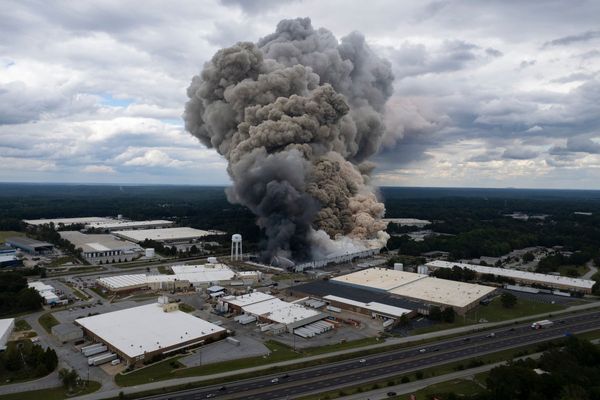
Birds do it, bees do it, and now geoscientists say even earthquakes do it.
An “earthquake swarm” has hit the Hunter region of New South Wales, with more than 30 seismic events recorded, according to Geoscience Australia.
On Saturday morning a 4.5 magnitude earthquake was recorded south-west of Muswellbrook. It followed just weeks after a 4.8 magnitude quake centred on the nearby town of Denman.
At the same time a cluster of 30 or more quakes – some up to 4.4 magnitude – have been recorded near Wyalkatchem in Western Australia’s wheatbelt, about 190km east of Perth.
What is an earthquake swarm?
Adam Pascale, chief scientist at the Seismology Research Centre in Victoria, said earthquake swarms were “not uncommon”.
A swarm was a short-term burst of earthquake activity in a region, where powerful events could occur at any point, unlike a typical earthquake, where tremors trailed off after the main shock, he said.
Earthquake swarms could happen anywhere at any time, he said. They were the Earth’s way of releasing built up tectonic stress accumulated over a long period.
Is the earthquake activity connected to mining?
While swarms occurred naturally, some human activities could induce them, Pascale said.
In the US, there were examples of human-induced events associated with wastewater being pumped back into oil wells as part of production, he said.
Gary Gibson, a senior seismologist at the University of Melbourne, said mining could sometimes play a role in seismic activity, depending on the underlying geology and fault characteristics. “Digging a very large hole in the ground can certainly cause earthquakes,” he said.
Can infrastructure be designed to withstand a swarm?
In Australia long periods without significant activity could contribute to complacency, Gibson said. “We have very few earthquakes but, when they happen, they do a lot of damage,” he said.
He said the engineering standards for earthquakes “varies enormously around the world”. Chile, located on the plate boundary between the Pacific and the Andes, was a world leader in modern engineering techniques to make buildings safer, according to Gibson.
In some ways, the risks were potentially greater in Australia, he said. “Our rocks are very hard and our faults are very strong. They don’t fail until you get up to a very high stress.”
Pascale said while major infrastructure could be engineered to withstand a certain level of seismic activity, the cost of doing so was significantly higher. “There’s been a lot of talk about nuclear power stations, and one of them was proposed to be close to where these ones are happening,” he said.
When will it end?
Gibson said it could be hard to tell when an earthquake swarm might end. There might be a cluster of events and then nothing. Or, small shocks might be a precursor to a larger quake.
Pascale said some swarms can last anywhere from a few days to months, before eventually dying out. “It’s much harder to forecast the activity in a swarm than it is for a typical mainshock-aftershock sequence.”







